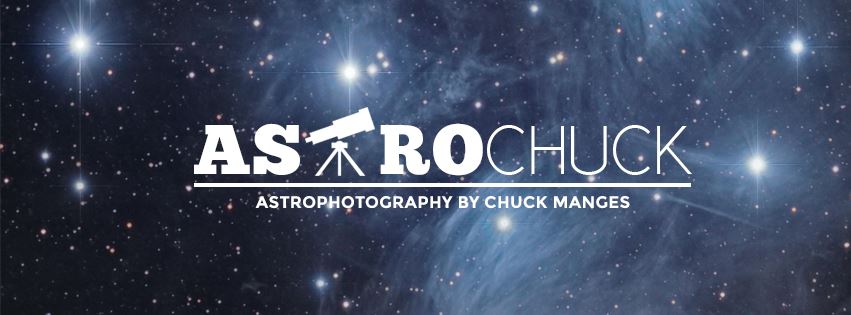I started Astrophotography August 2011 with my 8" SCT and brand new Canon T3i DSLR. I had never even used a DSLR camera before....alot to learn. My goal was astrophotography.
I had dabbled with astrophotography with a Pentax 35mm film camera when I purchased my 8" Meade LX-50 SCT in the mid-90's. This is one of my first images of M42 with the SCT and 35mm
A roll of film would yield 20-24 pictures and probably only 1 or 2 were worth keeping. I would manually guide on a dim star using an "off-axis guider". It's a T-shapped device which picks off part of the image the telescope captures. A special illuminated eyepiece with crosshairs was inserted, a guide star found and centered. The trick was to keep the star in the crosshairs using the telescope's handbox controller. An image as above would require me to stare into this eyepiece for 20 or more minutes. Boy has technology changed this.
Since last August I've imaged M42 more than any other deep sky object.
Apparently I'm obsessed with M42, this is my 12th version. It's only the 2nd with the new mono CCD however ;) .
Image taken with QHY9M & Orion ED102CF refractor 10/21/2012,10/22/2012, 11/10/2012 & 11/18/2012
LIGHTS:Multiple images were taken through each filter and saved in the FITS or RAW format. These are called "lights" . More on RAW and FITS formats below.
DARKS:"Darks" are created with the shutter closed and telescope dust cap on. Each image matches the exposure times,settings and temperature of the "lights".These are designed to subtract noise found in almost every camera, the white specks seen on the black background once they are taken. This is "thermal noise" generated by the heat of the sensor. That is why it is importaqnt to have the temperature match. Noise varies as the temperature does. The "darks" are then stacked directly on each other to average out the noise,creating a "Masterdark". The masterdark is then subtracted from each light. This is called pre-processing.
A. 20 minute "FIT" light frame
the white "speckles" are sensor noise, usually a product of heat, the longer the exposure more heat is generated. 20 minute subs demonstrate this well. I might mention these exposures were taken with my cooled mono CCD camera.(-30 degrees C) Imagine what a 20 minute sub from an uncooled camera on a hot summer night might look like.
C. "pre-processed" light frame (C=A-B)
Sensor noise has been virtually removed.
To be honest, when I first started astrophotography I did not use darks. They work best when(light) images are saved in RAW or FITS, and I had been saving the images in a .JPG format. FITS and RAW are formats with which the camera saves an image. I don't really know technically the differences, I just look at the formats as containers to transport images, with RAW and FIT being the luxury models. Each camera is different and many software programs have utilities to convert a cameras images to FITS or RAW.
These are single preprocessed 20 minute "light" frames taken through each filter of the mono CCD
A "masterdark" consisting of 7x20 minute darks was subtracted from each:
Luminance Clear (1x1200 seconds)
Red (1x1200 seconds)
Green(1x1200 seconds)
Blue(1x1200 seconds)
Multiple images were taken with each filter preprocessed(darks subtracted) then stacked using Nebulosity2 software. 4 "stacks" were created.(LRGB) 2 stars are selected from each image so the software knows how to align rotate and scale each image for the stack. Once the stack is complete it is saved as a .bmp. Next Nebulosity's DDP is used. Below is an example of the "blue" stack (using 4 aligned,rotated and stacked 1200 second images) before processing with DDP
Blue (4x1200)
Nebulosity's DDP is used. Although I never have tried this before, Photoshop's or GIMP's "curves" can be used to "stretch" the image as DDP has done here
Once I use DDP on all 4 stacks, I import them into Photoshop as "layers" Each stack is then colorized to match the filter they were aquired through
At this point I tweek each layer, perhaps using curves to enhance a layer,sharpen a layer, remove noise,etc.etc.
Each colorized layer is then combined using the"screen" or "lighten" tabs defining the layer. GIMP and Photoshop are similar. I'll decribe more in detail some steps I used to correct the core area of M42 and combining the colorized layers next timeTotals 8 hours
L- 7x10min 4x20min
R-3x10min 4x20min
G-3x10min 4x20min
B-3x10min 4x20min
(5x2 seconds for the core area)
L,R,G &B Images acquired,aligned and stacked with Nebulosity V2.0
Guiding with Orion 50mm mini guider,SSAG and Phd
Combined & post processed with PS6 and StarTools
Reprocessed on 11/27/2012:
Reprocessed 12/1/2012
Used RGB subframes before DDP processing as a seperate layer in an effort to clean up some of the relections caused by the filters

.jpg)




.jpg)
.jpg)
.jpg)
.jpg)

.jpg)
2.jpg)





+(887x1020).jpg)

+(1000x810).jpg)
